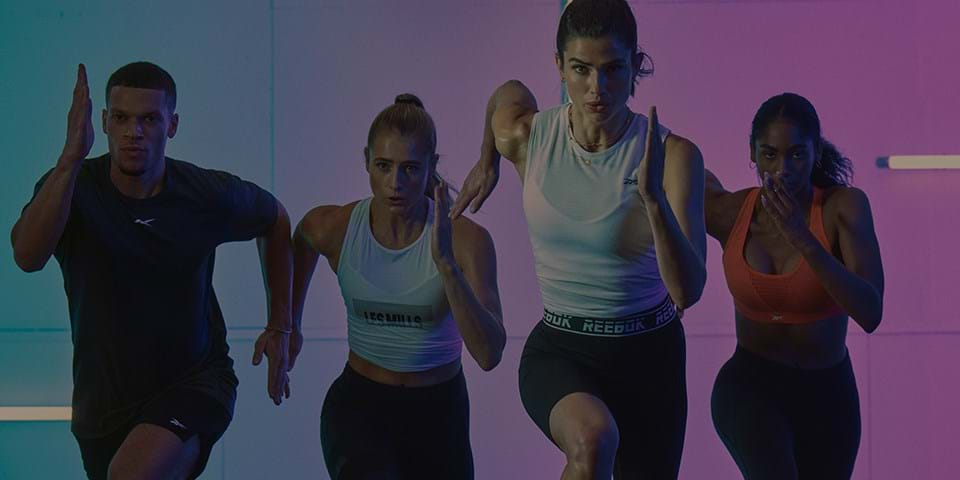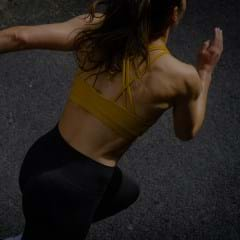Read on and you’ll discover:
- Glute mechanics and the different ways our glutes work
- The most effective exercises to train your glutes
- How to get the most out of glute max exercises
- The top glute exercise for runners
While many focus on the aesthetic benefits of building strong and powerful gluteal muscles, there are many more reasons why it’s important to work your booty. Getting your glute mechanics in good shape is key to keeping your lower limbs aligned during any weight-bearing activities – and that’s basically any activity you do on your feet!
How do strong glutes help us?
The gluteus maximus and the posterior fibers of the gluteus medius laterally rotate the femur, so they help prevent the knee from drifting inward – this is particularly important during exercises such as squats and lunges. Strong glutes are also important for preventing knee pain during impact activities such as running, walking and climbing stairs. And, your glutes help to hold your pelvis together and prevent pelvic instability, which is the painful situation where your joints in the lower back and pelvis move excessively when you walk and run.
There are two ways we use our glutes – vertically and horizontally
Activities like climbing, lifting and digging all engage our glute muscles vertically. Squats and lunges are great for training vertical strength. These exercises create vertical forces initiating a high demand on our posterior chain and therefore a strong glute max contraction. The largest contraction kicks in at the bottom of the movement when the hips are flexed.
Walking, running and pushing are the types of activities that engage our glute muscles horizontally. This is where bridges and hip thrusts come in. These exercises are highly effective because they strengthen our glutes into full extension, the glutes stay under constant tension throughout the whole movement, and the move is not compromised by back strength, which cannot be said of squats and lunges.
Research shows the hip thrust will elicit greater gluteus maximus and hamstring activation compared to the back squat and produces higher horizontal forces that we need when we run. Researchers came to this conclusion after collecting EMG data from 12 male athletes as they did squats, lunges and hip thrusts. The researchers measured their peak force during each exercise and correlated it to their speed when sprinting. They found that peak horizontal force during sprinting was linked with peak velocity (horizontal force) but not peak vertical force.
So, if you want to run faster, training your glutes horizontally with hip thrusts and bridges is the way to go.
However, whether you’re a runner or not, a glute training program consisting of nothing but thrusts is probably not a good idea. With this in mind, we’ve combined new findings with insights from a previous study that explored the most common therapeutic exercises to restore glute function and rated them according to the amount of electric activity they generated. The result is a comprehensive list of the top glute exercises to try out for maximum impact.
TOP WAYS TO WORK YOUR GLUTES
Hip thrust
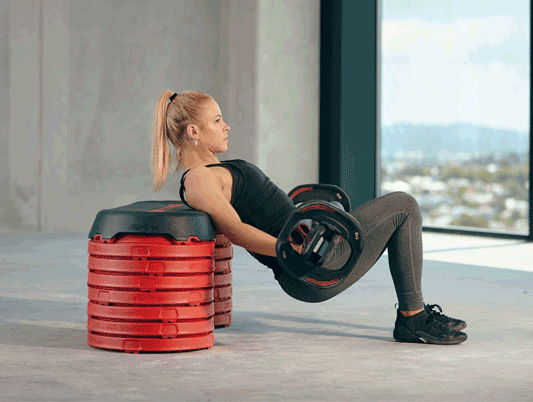
- Start with your shoulder blades against a bench and your arms spread across it for stability.
- Bend your knees and ensure your feet are flat on the floor.
- Brace your core, squeeze your glutes, lift your hips and hold for a couple of seconds at the top.
- Be careful not to hyperextend your lower back at the top.
- Lower down, keeping your abs engaged to move the body as one unit.
You can do this exercise without any weights, or intensify it by adding a weighted barbell across your hips. Repeat 10-15 times.
Single leg squat

Start with your feet hip-width apart, chest lifted and abs engaged.
- Balance on one leg, bending one knee and lifting the foot behind you.
- Sit the hips down and back, pushing your front knee out over the mid-line of the foot.
- Keep the chest lifted and weight through the heel on the floor.
- Drive through the heel and squeeze the glute to rise.
Repeat 10-15 on each leg.
Single leg deadlift
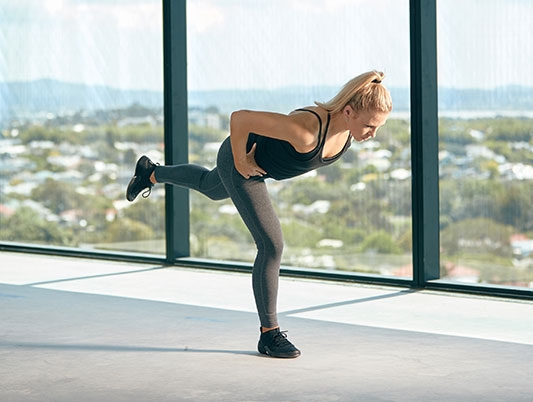
- Start with your feet hip-width apart, chest lifted and abs engaged.
- Lift one leg off the floor and soften the standing knee to activate the glutes.
- Keeping the chest lifted and back straight, hinge at the hips and lower your trunk until it’s almost parallel to the floor.
- Briefly pause at the bottom, then squeeze your glutes and push your hips forward to raise your torso back to the starting position.
Repeat 10-15 on each leg. For an extra challenge keep your foot off the ground when you return to standing.
Transverse lunge
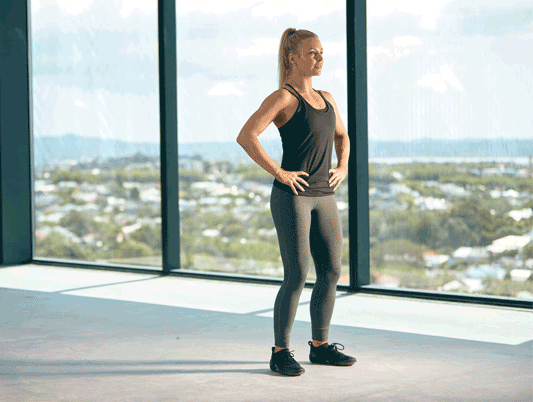
- Start with your hands on your hips and feet hip-width apart.
- Lift your right leg and in a consecutive motion, rotate 180 degrees to your right.
- Land in a lunge position with your right knee and right hip at 90 degrees, then return to the starting position.
- Keep your trunk in an upright position throughout the movement and make sure your knee is tracking over your toes when you land in the lunge.
Repeat 10-15 on each leg.
Forward lunge
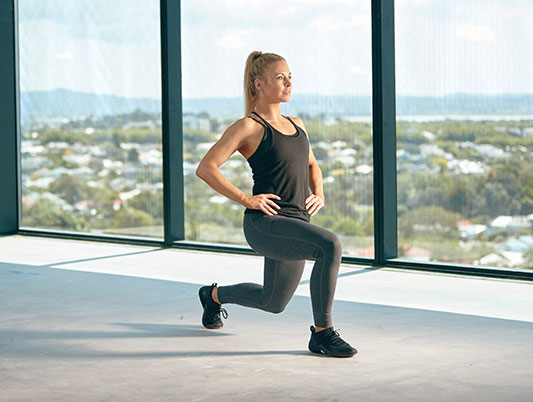
- Start with hands on hips, feet hip-width apart, and abs engaged.
- Take a long step forward and shift your weight forward so you land through your front heel.
- Bend your knees until your front thigh and back shin are parallel to the floor.
- Keep your back straight with your chest lifted and hips square, and ensure your front knee is tracking out over the mid-line of the foot.
- Press into your heel to drive back into the starting position.
Repeat 10-15 on each leg.
STEPPING BACKWARDS CAN BE A SMARTER MOVE
Further studies have shown that you can enjoy all the benefits of the forward lunge and reduce the risk of injury by simply stepping backward. Find out why you can’t beat backward stepping lunges here.
Side lunge
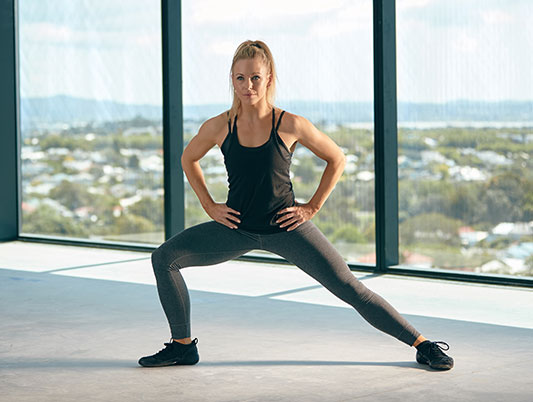
- Start with hands on hips, feet hip-width apart, and abs engaged.
- Take a long step forward and shift your weight forward so you land through your front heel.
- Bend your knees until your front thigh and back shin are parallel to the floor.
- Keep your back straight with your chest lifted and hips square, and ensure your front knee is tracking out over the mid-line of the foot.
- Press into your heel to drive back into the starting position.
Aim for 10-15 on each leg.
Side-lying leg raise
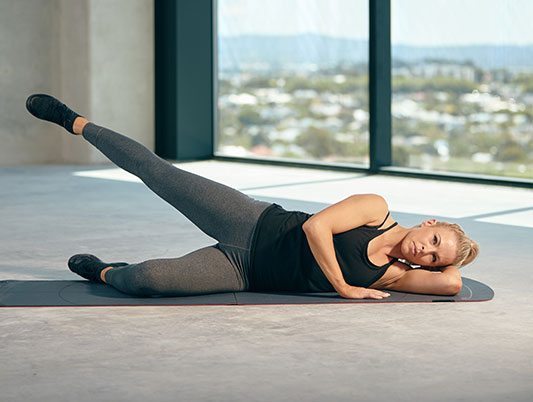
- Lie on one side, resting your head on your lower arm and with your upper hand on the floor for support.
- Brace your abs and bring your bottom knee slightly forward, resting the top leg on top of the leg on the ground.
- Lift the upper leg to the ceiling, keeping your hips stacked. Pause, then lower the leg.
Repeat 10-15 times then change sides.
Lateral band walk
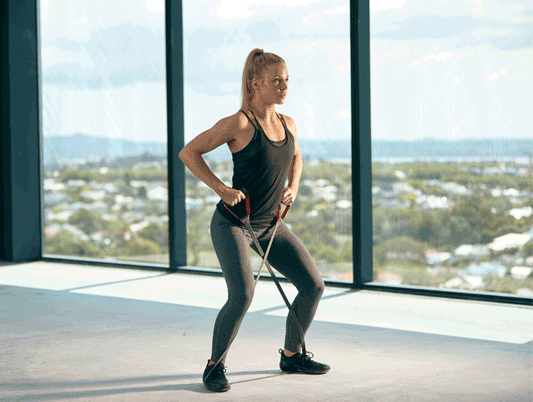
- Place both feet inside your resistance band, starting hip-width apart, and cross the handles at your hips.
- Brace the abs and lift the chest.
- Take a step to the right, bending the knees and pushing the hips back and down to a half-squat.
- Take 15 steps to the right, then repeat to the left.
Sideways hops
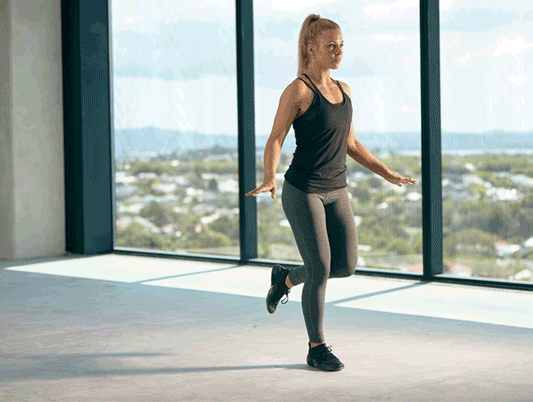
- Start with your feet hip-width apart, chest lifted and abs engaged.
- Balance on one leg, bending one knee and lifting the foot behind you.
- Jump to the right into a half squat, bending the knees and pushing the hips back and down. Repeat to the left.
Repeat 10-15 on each leg.
Workouts like BODYPUMP, LES MILLS CORE and LES MILLS BARRE all provide plenty of great opportunities to train your glutes.




